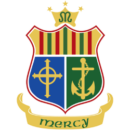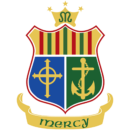Junior Cycle
The present policy in the school is that all first-year students have an opportunity to experience the following wide range of Junior Cycle subjects:
| English | Irish |
| Maths | History |
| Geography | Science |
| Religion | French/German |
| C.S.P.E | P.E |
| Wellbeing | Music |
| Technical Graphics | Business Studies |
| Visual Art | Home Economics |
In the second and third years, the number of examination subjects is reduced to 10 and must include Irish, English, Maths, History, Geography & Religion. A modern European language is generally on the list and the remaining three are chosen from Business Studies, Visual Art, Home Economics, Music, and Graphics.
For students who might benefit from it, both Learning Support and Resource Teaching are available. Third-year students have classes in Career Guidance as well as personal interviews.
An outline of Junior Cycle Subjects can be found here:
Junior Cycle Reform
The Junior Cycle was first introduced in September 2014. The program focuses on literacy, numeracy, key student skills, and new approaches to assessment and reporting.
New Junior Cycle – New Language
The New Junior Cycle is now part of the everyday experience of students in St Mary’s Secondary School. In order to support our students during this time of change we need to become familiar with both the language and meaning of new Junior Cycle terminology.
There are four terms being used in school every day which will help us to understand the final grade achieved in the Junior Cycle.
- Classroom Based Assessment (CBA)
- Assessment Tasks (AT)
- Junior Cycle Profile of Achievement (JCPA)
- Features of Quality
- CBAs are an integral part of the New Junior Cycle. They provide students with opportunities to demonstrate their understanding and skills in ways not possible in a formal examination. CBAs take place during class time and are reported on in the Junior Cycle Profile of Achievement (JCPA).
There are two CBAs for each subject, one in the second year and one in the third year (Gaeilge is the only exception to this with two CBAs taking place in the third year). The grading system used for CBAs comprises a ‘Descriptor’ rather than a percentage. Descriptors are awarded to students based on subject-specific ‘Features of Quality’ (please see point 4 below). Further information about the content of these CBAs is available on the JCT website www.jct.ie - The Assessment Task is a written task completed by students during class time and is sent to the State Examinations Commission for marking. It takes place immediately after CBA2 in the third year and is based on material from CBA2. This task is worth 10% of the final Junior Cycle exam.
- The JCPA is the award that students will receive at the end of their junior cycle. This certificate will reward achievement across all areas of learning including achievements outside of the classroom e.g. music, sports, etc.
- Features of Quality are statements that support teachers in making decisions about the quality of student work for the purpose of awarding a ‘Descriptor’. These ‘Features of Quality’ are available on our website under JCT and will help you to understand the grade your daughter has achieved.

